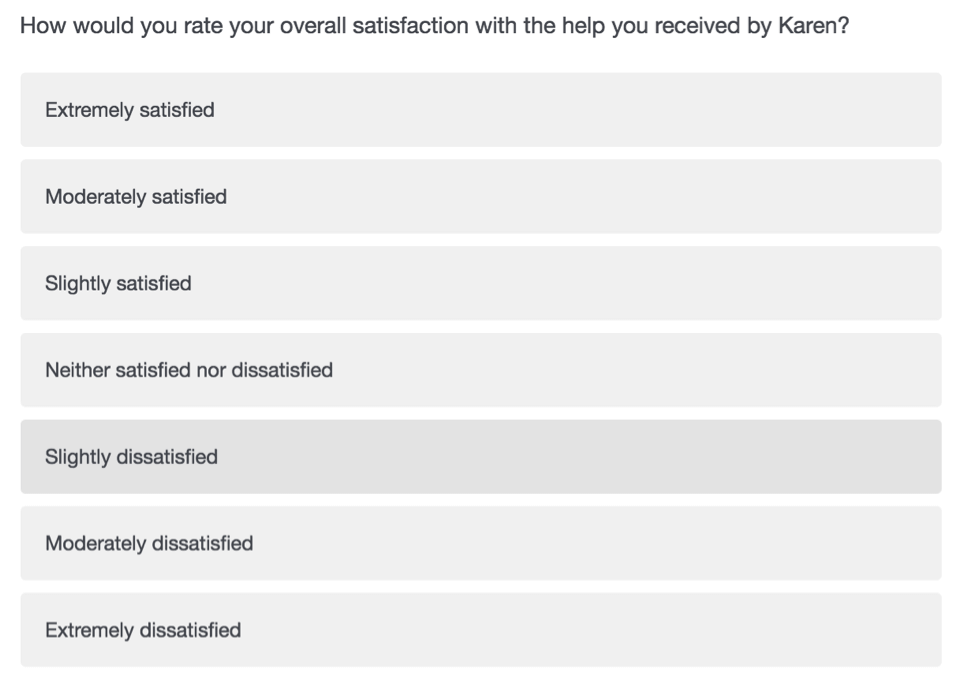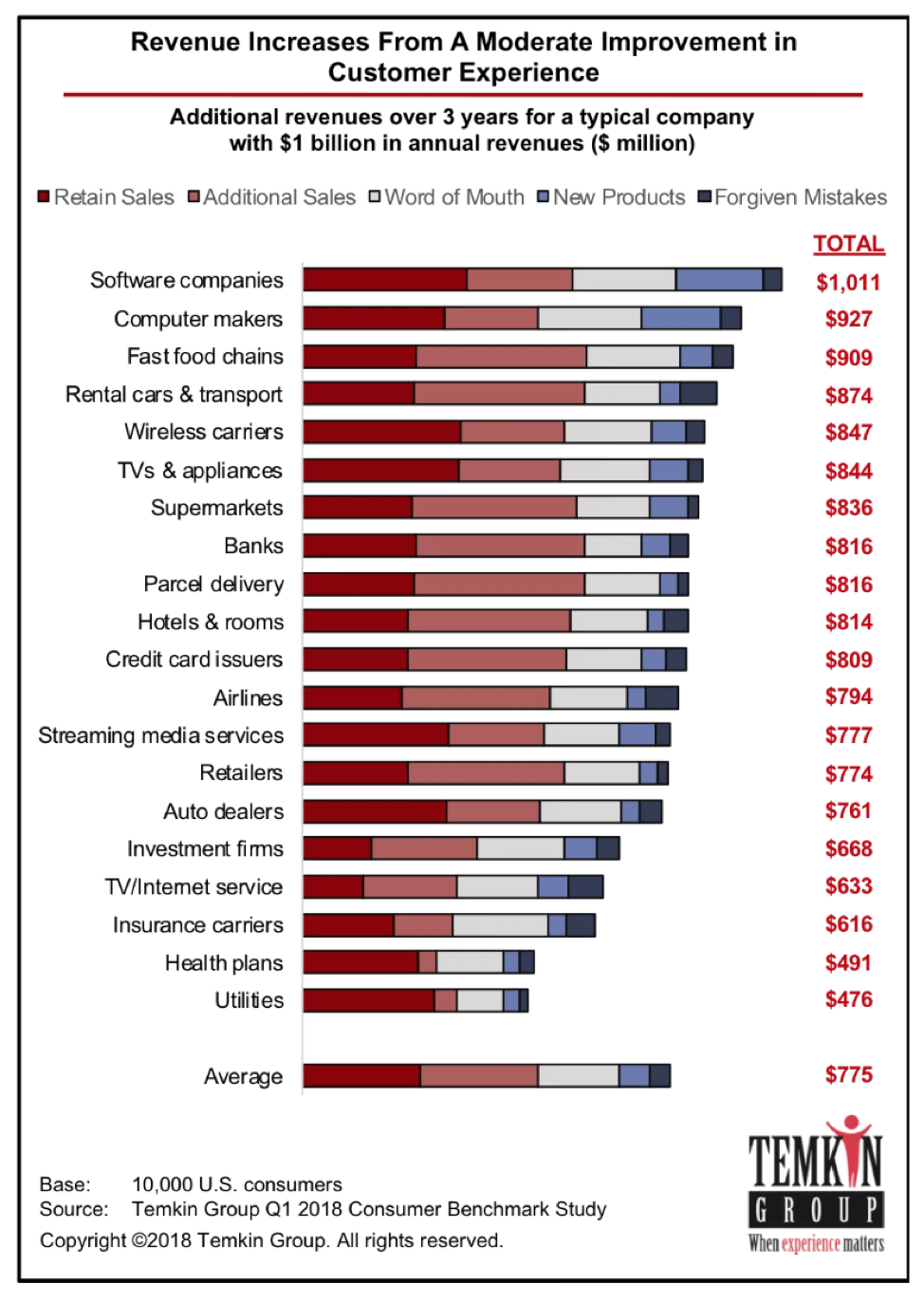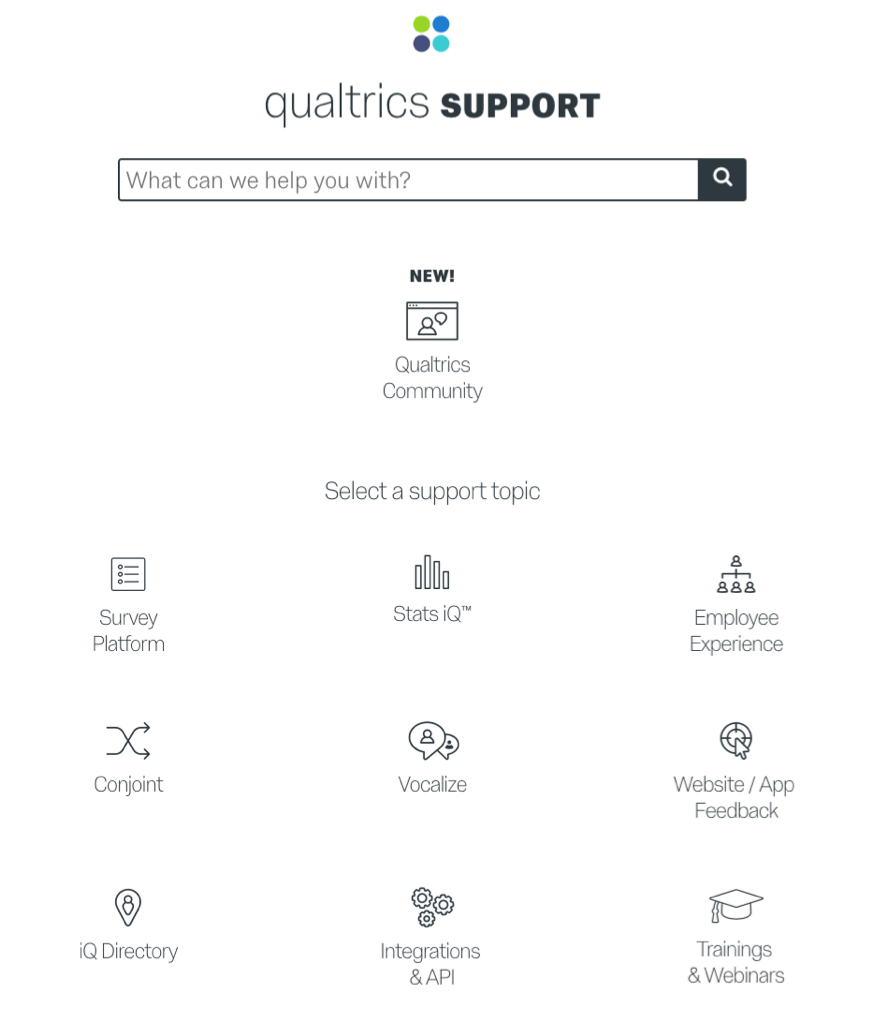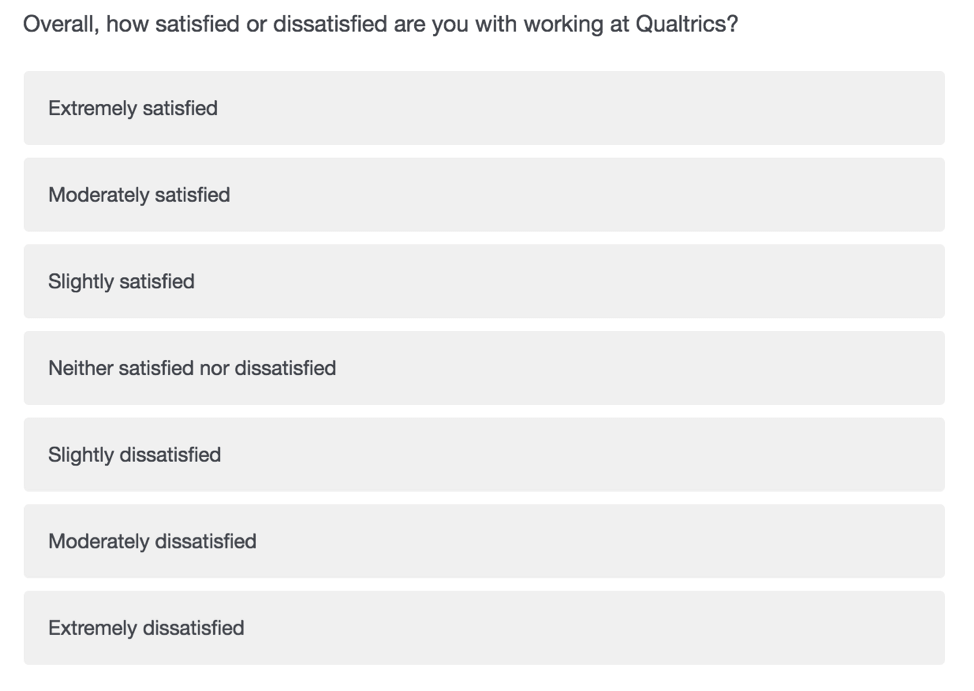Great customer service is the foundation of providing an excellent customer experience and consumers continue to reward companies that do service well. According to research by American Express, consumers are willing to spend 69 percent more with companies that deliver good customer service.
On the flip side, poor customer service is costing companies greatly. The report found that more than half of people decided against making a purchase because of bad customer service, and 33 percent say they’ll consider switching companies immediately after a single instance of bad service.
In order for companies to be competitive in today’s business landscape, they must focus on providing great customer service and increasing customer satisfaction. This starts with understanding your customer’s experiences and turning your contact centre from a necessary overhead to a primary driver of customer satisfaction.
Discover how to engage content center teams to keep your customers happy
What is customer service?
Great customer service is about understanding customer problems or queries, and finding the best solution as efficiently as possible. It’s about creating a customer experience that exceeds their needs and wants, consistently anticipating how they feel and understanding what drives them to you in the first place so you can fulfil that expectation every time. Great customer service might be a quick and simple solution, or it might require a lot of an agent’s time. It depends on the task in hand, and is important to realise that there is no “one size fits all”. It is important to also understand that you can “over-service” a customer. Understanding what is adequate helps to provide a t level of service that ensures operational efficiencies without diminishing loyalty.
How do you understand your customers on a deeper level so you can provide better customer service? The key is to capture, track and analyse the following customer insights:
- Emotions: How do customers feel about your brand? What emotion drove them to their potential purchase? When they reach out to you, how can you transform negative feelings into positive ones?
- Effort: How hard is it for them to buy from you? What level of effort will put them off making a purchase?
- Sentiment: What is the underlying view of the customer? When they contact you, what is the real meaning behind their words?
- Intent: What do they intend to do?
These aspects of your customer interactions will help you to deliver excellent customer service. What does great customer service look like? t
- Your whole organisation works together: Consistent interactions across the business, with each informed by existing customer data, helps your audience to feel more connected to your brand. It’s not just the responsibility of your customer service teams – it’s on every employee to contribute.
- There’s excellent customer service on every channel: Your customers have preferences for which channels they use for specific tasks – you’ll need a multi-pronged approach to meet them where they are and offer an experience that’s unforgettable.
- Let customers choose how they want to be served: Excellent customer service doesn’t necessarily mean talking to a person – sometimes customers prefer to look for an answer themselves. Free up your customer service reps with streamlined self-service options and allow your team to work on the priority issues.
- Your customer service reps are friendly, knowledgable and understanding: Your customer support teams need to show that they’re friendly, have deep product knowledge, and understand where customers are coming from – no matter where they meet your audience. These are the basic customer service skills that will drive customer loyalty.
- Your brand actively listens: Your customer service experience is enhanced by listening to the voice of the customer and what customers are implicitly telling you. Show you care by accepting their input and taking action and see your brand reputation rise as a result.
Why is getting customer service right so important?
Offering good customer service today is one of the easiest ways in which a brand can stand out from the competition. Offering better customer service can mean conserving revenue, pulling in new customers and preserving your existing customers’ relationships with your brand. Customer loyalty is hard won – now it’s easier than ever to walk away from bad customer service and find another provider.
Here are the top reasons why you should invest in creating an excellent customer service experience:
Up to 9.5% of your revenue is at risk by offering bad experiences such as poor customer service. Protect your business from losing out unnecessarily by investing in customer engagement and your support team.
8 out of 10 customers believe customer experience needs to be improved, with customer service highlighted as problematic. Stand out from the crowd by making your good customer service a feature, not simply something you do because you have to.
68% of consumers are willing to pay more to brands offering good customer service. Don’t discourage customers from spending with you – augment your customer experience and revenue with excellent customer service interactions.
Almost 3 out of 5 consumers say that great customer service is important for customer loyalty. Building on your existing customers is the fastest way to achieve business success. Invest in customer service and your customer relationship management skills and reap the benefits.
Good customer service metrics to measure
Just like you wouldn’t run a marketing campaign without measuring the results, you also shouldn’t provide customer service without measuring how your customers perceive their support experience.
There are two types of data to measure: Experience data (X-data) and Operational data (O-data). X-data is the human factor data — the beliefs, the emotions, and the sentiments that lie behind their behavior. It’s the human feedback that points to the gaps between what you think is happening and what’s really happening. O-data is tangible records of activities and is helpful because it tells you about win rates, response times, and employee efficiency.
To learn about each of these metrics in-depth, check out our article “The Top Customer Service Metrics to Measure.”
Experience metrics (X-data)
- Customer Satisfaction (CSAT)– A commonly used key performance indicator to track how satisfied customers are with your organisation’s products and/or services.
- Customer Effort Score (CES)– Measures how much effort a customer has to exert to get an issue resolved, a request fulfilled, a product purchased/returned or a question answered.
- Net Promoter Score (NPS)– Measures the loyalty of customers to a company by asking if they would recommend your products/services to a friend.
- Social Media Monitoring– Social Media should be monitored for brand mentions over time, negative comments, and technical or account questions.
- Customer Churn– Also known as customer attrition, churn is when a customer chooses to stop using your products or services.

Operational metrics (O-data)
- First Response Time– The amount of time it takes to reply to the customer.
- Overall Resolution Rate– The number of tickets that are actually resolved.
- First Contact Resolution Rate– The number of tickets that are resolved on the customer’s first point of contact.
- Customer Ticket Request Volume– The number of support tickets you receive each day/week/month.
- Average Handling Time (AHT)– The amount of time it takes to resolve a ticket.
Customer service surveys
The only way to know if your audience is happy and you’re meeting customer expectations is to ask. Customer service surveys can evaluate the agents, ease of service, and the quality of service. For more information on customer service surveys, check out our article “Questions to Ask on a Customer Service Survey.”
Type of surveys and questions
- Agent-specific survey questions– Focus on the customer’s interaction with the specific customer service professional that handled the ticket.
- Based on your recent interaction regarding (insert incident), how satisfied or dissatisfied were you with our service team member?
- Channel-specific survey questions– Focus on the quality and ease of the specific channel like phone support, email, or live chat.
- Were you satisfied with the live chat feature?
- Customer Effort Score (CES)– This is an industry benchmark and can help predict churn and loyalty.
- How easy or difficult did Qualtrics make it for you to handle your issue?

Make your surveys smarter
Your customers are giving you valuable insights, so It’s important to honour their time and maximise your effort. By sending smarter surveys, you can gather great information without creating survey fatigue.
- Don’t ask questions you already have the answers to — Questions like the customer’s name or date of interaction are repetitive and frustrating for the customer. Your survey platform should already have this information.
- Use question logic – Use conditional or skip logic to ask questions based on previous answers. This makes the survey personal and gives you more detailed insights.
- Keep it short — Shorter surveys reduce survey fatigue and generally have higher response rates.
- Utilise a robust right survey platform — In order to get the best insights, you need a platform that can capture insights, analyse the data, and strategise action. Qualtrics CX management uses AI in data analysis to engage customers on their terms and predict what they will do next.
If you’re ready to start a survey today, download our free customer service survey template.
Improving customer service at your company
Providing good customer service is crucial in today’s experience economy. According to the Temkin Group, a modest improvement in customer experience generates an average revenue increase of $775 million over three years for a company with $1 billion in annual revenues. Consumers are willing to spend more money with brands with great customer service skills, and they stop doing business with companies who provide bad customer service experiences.

While it’s not always easy, there are ways companies can improve their customer service experience.
For more information on taking your customer service to the next level, check out our article “How to Improve Customer Service at Your Company.”
Invest in technology
In order to create a robust customer service program that supports exceptional customer service, you must have technology that supports X-data and O-data. The best customer experience management programs track every customer interaction and analyse the data to close the gap between what customers expect and the experience currently being delivered. In addition, service desk management and ticketing software programs are helpful to track service levels, set goals for your customer service team and make sure you’re closing the feedback loop with your customers.
Provide self-help content
A recent study by ZenDesk found that 91 percent of respondents said they would use a self-help knowledge base if it was available and met their needs. Customers want to answer their own questions without speaking to an agent. Creating a robust knowledge base can reduce the number of customer support calls, saving your company money and creating a better experience for your customers.
Close the feedback loop
When a customer reaches out to your company, they want a response— and fast! It’s important to directly respond to customer feedback and close the feedback loop with each customer to ensure their issue has been resolved.

Meet your audience where they are for increased customer satisfaction
Your customers want support options wherever they are and you must be able to meet them where they’re at. Omnichannel customer service and feedback uses multiple service methods like email, phone, and live chat to create a unified brand customer support experience. Your customer should have a positive experience using each channel.
As we’ve seen, web self-services and knowledge bases are now the preferred method of receiving support. According to Forrester research, self-service minimises handle times and customer recontacts and maximises first-contact resolutions.
In addition to self-service, customers now expect multiple channels of support such as:
- Live chat
- Social media
- Call centre
- Forums
- Video
- Mobile messaging (SMS)
- Messaging apps (i.e.- Facebook Messenger)
How to train and motivate every customer service representative
Employee experience (EX) and CX go hand in hand. The more engaged employees are, the better experience they’ll provide to your customers. Focusing on your EX program gives you a competitive advantage and a motivated workforce.
Train your customer support staff
Your customer service representatives should receive training in soft interpersonal skills such as clear communication and empathy, and hard skills like technical and product knowledge training. In addition, they should also be trained to use any phone or live software, so they can help customers efficiently. Providing training can boost employee motivation and engagement, too.
Customer service skills
Skills training can boost your employee’s confidence and help them provide better support. Below are some of the skills you could train your customer service representatives on. For more information, check out our article “10 Tips to Improve Your Customer Service Skills.”
- Active listening
- Empathy
- Use positive language
- Technical skills
- Clear communication
Reward excellent service
Low employee morale costs companies $350 million each year. One of the best ways to boost morale is by providing rewards to engaged and high-performing customer service reps. Find ways to keep your team cohesive, feel appreciated, and excited to keep working hard. Some of the best ways to do that are:
- Preferred scheduling
- Personalised gifts
- Raffle
- Free food
Measure support team development
Just like you measure the effectiveness of your CX program, you should also measure if your EX program is delivering results. Simply sending out an annual employee engagement survey is not enough. You can send regular pulse surveys or short pop-up surveys and measure different metrics like efficiency, productivity, engagement, and employee NPS.

Communicate the company vision
Communicating your company vision is one of the most important things you can do to boost EX. The better employees understand your vision and why customer service is important, the more they’re going to be engaged and contribute to your company and customer service success. This especially applies to millennials, as 94 percent want to use their skills to benefit a cause. Always make sure the company vision is visible and share stories that realise the vision so your employees remember it.
Take action on service feedback and share performance across the organisation
Creating a better customer experience is not the responsibility of just one department, but is dependent on every employee as a customer service representative, whether they interact with customers or not. It must be ingrained in the culture and start at the top.
Using an experience management platform that easily shares data across the organisation is the best way to collaborate on solutions, notice trends, and take a more holistic approach to CX, combining it with your EX data to ensure you’re enabling your people to deliver on the experience.
Each customer service representative must be empowered to take action when they notice an issue. There should be practices in place before an issue arises, and employees should be trained to handle all types of complaints and problems with the product.
eBook: How to get your customer service right, every time